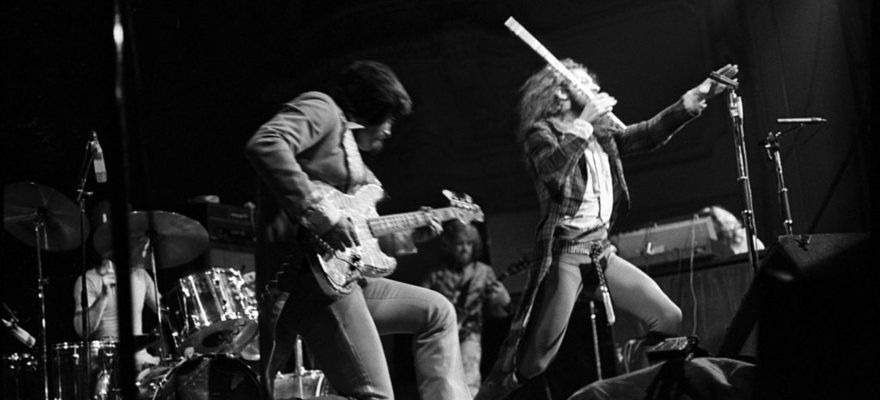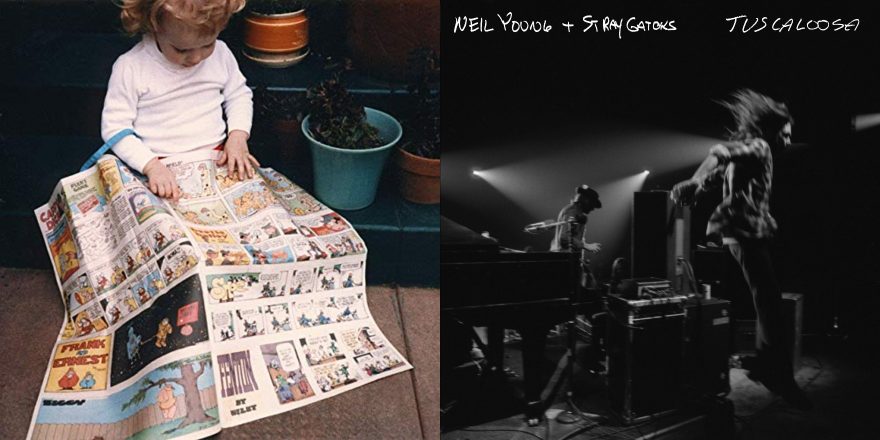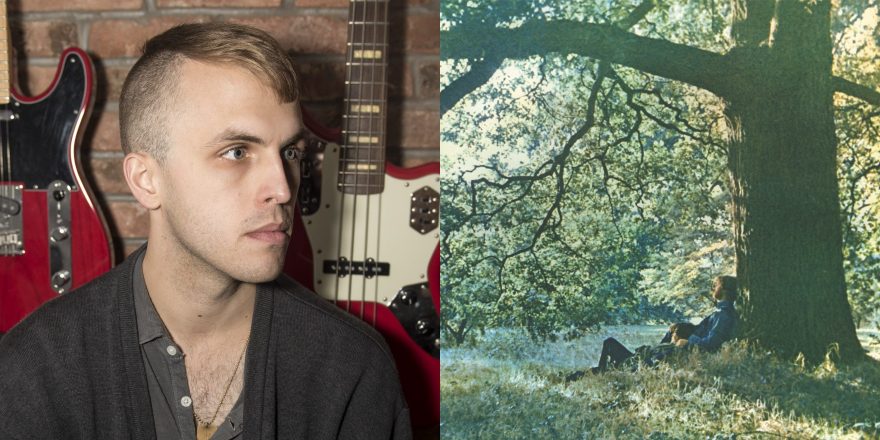I may come from a furniture sales background and spend 80% of my waking hours talking, thinking or writing about music, but I have a hard time selling three particular artists to my friends.
The first is Randy Newman. “But he’s a mordant and incisive artist,” I say! “He has songs about bigotry and child murder and beating people up!” No dice: I guess the Pixar soundtracks are insurmountable for some people. (To clarify: I love those, too.)
The second is Steely Dan. Despite their black humor and Serious Music bona fides (Wayne Shorter, Steve Gadd, and the Brecker Brothers played with them, for chrissakes!), I guess the yacht-rock perception remains — despite bearing zero aural or aesthetic resemblance to, say, Seals and Crofts.
It’s the third I want to talk about: Jethro Tull. Newman may be an acquired taste, but much like The Dan, I argue that they offer something for most people. Thunderous hard rock? Dig Stand Up and Aqualung. Jingle-jangling folk? Head straight for Songs from the Wood and Heavy Horses. Electronic textures? Crest of a Knave. Knockout acoustic ballads? All over the place.
Certain tunes, like “Wond’ring Aloud,” “Really Don’t Mind,” and “One White Duck / One White Duck / 0¹⁰ = Nothing at All,” I’ll take to my grave. And their first album since I was 11, The Zealot Gene — which arrived January 29 — just gifted me a few more.
While Ian Anderson may be the only original member of the band, The Zealot Gene sounds more like their most beloved work than anything they’ve done in 30 years. But more importantly, highlights like “Jacob’s Tales,” “Sad City Sisters,” and “Barren Beth, Wild Desert John” rank among Anderson’s most psychologically rich and incisive offerings.
All that said, despite a dozen albums I could cite — and my readymade treatise about the mystique, curiosity and raw intellect therein — I rarely get more than an, “Oh… cool” when I rave about Tull. This happens even when my captive audience is already a disciple of other progressive giants, like King Crimson, Genesis, or Yes.
Given that I’m unable to call up my late father, a Tull disciple, I can feel somewhat solitary in this musical obsession these days. (Caveat: my wife, Brenna — who was reared on acts like the Chieftains — connects to the traditional-folk elements.) But perhaps there’s something to having a musical fondness that I share with few others I know. I love the Beatles, the Stones, and the Who, but they could never be mine. Tull feels mine.
Allow me to theorize as to why Jethro Tull remains bizarrely underrated. Sure, they were a staple of classic rock and remain household names — even somebody with no real connection to their music probably knows the flute, the haggard fellow on the cover, and the “Aqualung, my friend” line.
But whether it was due to the codpiece, the onstage pirate ship, the 45-minute song, or their ill-advised dalliance with the saxophone, Tull comes with some… connotations. And I understand: for every flawed album I vociferously defend, there are a few — like War Child, A Passion Play, and Under Wraps — that I never listen to at home. If those were their introduction to the band, I totally get why someone would pass.
It helped that I started young. Even in my single digits, my dad taught me to listen to and understand their lyrics, even pausing the elliptical “Moths” over and over in his Honda Prelude so I’d absorb every line. Raised as one of Jehovah’s Witnesses — a denomination that emphatically opposes the trappings of mainstream Christianity — I was reared to grasp Anderson’s anti-dogmatic feelings in “Wind Up.” And growing up in nature on a steady diet of Tolkien, I could imagine “Jack-in-the-Green,” about a character somewhere between Tom Bombadil and Radagast, as a raggy denizen of my verdant surroundings.
That’s all to say: it’s not like I grew to love Tull after I underwent the usual musical phases, from psychedelia to punk to hip-hop. I will freely admit that their connection to a beloved parent and my earliest memories makes me biased — an eternal Tull apologist.
Anyway, to cite the Beatles again, the Get Back discourse was a startling reminder of their universality; everything I’ve mapped onto their story proved to be one tiny constellation in a supercluster of galaxies. But with pretty much just a smattering of my in-laws back home and some greyhairs on fan-sites aboard the Tull train, the communion feels more private — and therefore more special.
I’ll make another admission: Tull’s acoustic material does more for me than the rockers, even though I love many of the rockers. This holds true for The Zealot Gene. While the blazing “Mrs. Tibbets” and “Shoshanna Sleeping” are great, it’s the suite of ballads near the end, from “The Betrayal of Joshua Kynde” to “In Brief Visitation,” that most speaks to me.
And, gosh, that last one: I honestly can’t get it out of my head. Drawn from the Gospels of John and Luke, Anderson uses Christ as a launchpad to consider “fall guys” of all stripes.
Wait a minute: Jesus as a fall guy! The notion would be off-putting if I didn’t know about Anderson’s abiding support for Christianity, or if the song wasn’t suffused with such love and wonder. “There are probably other cases where people who probably do good things still end up being pilloried in some way because they’re easy targets,” Anderson explained to me during a recent GRAMMY.com interview.
That makes me think of Tull’s place in the musical landscape: beloved by a global cult fanbase, but largely frozen into an Anchorman joke otherwise. I’m at peace with that: if Anderson’s questionable, mid-’70s stage outfits made you head for the hills, great: more for me!
Maybe they’re too brainy, too silly, too theatrical, too ambitious, too erudite, too comfortable with “uncoolness” for the hipster reappraisal train to pick them up along with ELO and the Grateful Dead. But for me, those are the exact qualities that make Tull like coming home.
(Photo Credit: Heinrich Klaffs)






